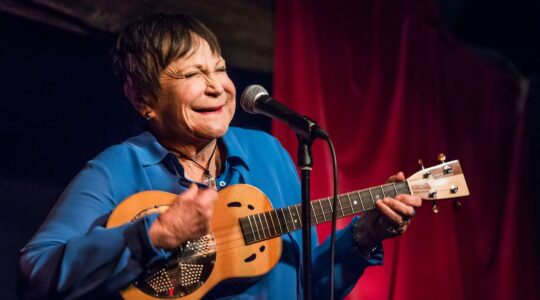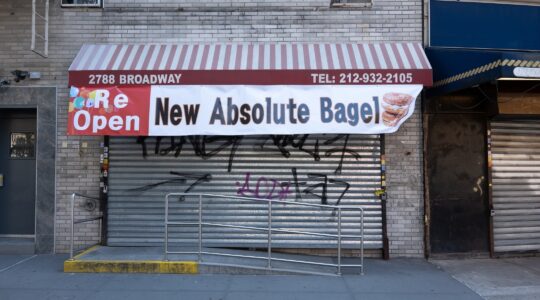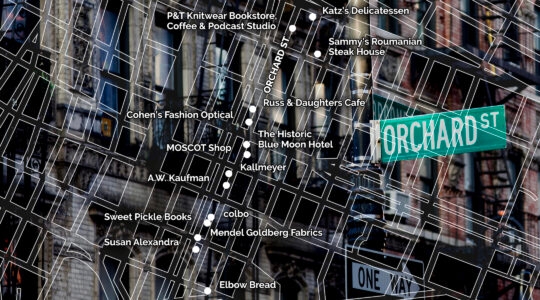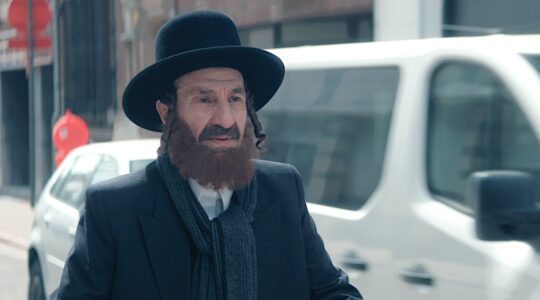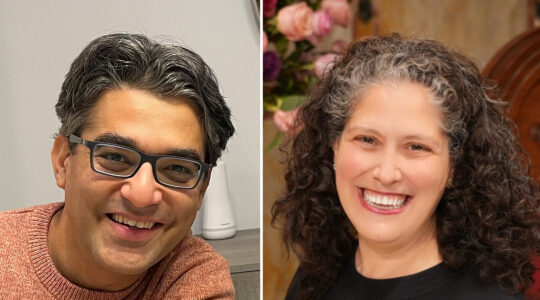In the age of the coronavirus, the opportunities for binge watching are all the more bountiful.
There’s the alternative reality, escapist adventures of “Tiger King.” There’s the reflective, nuanced yet hilarious new creation of Mindy Kaling, “Never Have I Ever.” There’s the optimistic, relentlessly hopeful “Some Good News” web series with John Krasinski. Indeed, the golden age of television is still thriving.
Me? I would be lying if I said I’m not drawn to a certain genre of dark, tormented drama.
As a grandchild of Holocaust refugees and as a native speaker of Yiddish, the language of the more than six million who perished, I’ve always been drawn to what in our family is simply known as “the war.”
Besides the plethora of Yiddish songs and poetry that stemmed from that period, there have been films made after that dark chapter that approach the subject in nuanced and intentional ways.
Like the last Yiddish film made in Poland in 1951, “Undzere Kinder,” Our Children, in which the comedy team Dzigan and Shumacher stage a story for an audience of children who have survived the Shoah. Or even a Hollywood film like “Judgment at Nuremberg,” based on the real Nuremberg trials, and one of the first times Hollywood used actual historical footage of the Holocaust on the silver screen.
But, in 2020, the expansive list which covers that war has only continued to grow — and mutate. There’s a new genre of entertainment devoted to fictionalizing and fetishizing a trauma. A new genre known as “Holocaust porn.”
It began perhaps in 2008, with “The Boy in the Striped Pajamas,” a sentimental, exploitative film that was replete with factual inaccuracies. Since then the Holocaust porn industry has produced some classics: Tarantino’s revisionist thriller “Inglourious Basterds,” where viewers can revel in seeing Hitler assassinated; Amazon’s bizarre “The Man In The High Castle,” set in a parallel universe in which the Nazis won the war (who knew Holocaust science fiction was even a thing?); “JoJo Rabbit,” a light-hearted take on Hitler Youth.
More recently, there’s HBO’s thoughtful “The Plot Against America,” another alternate history that imagines what American life might have been like had the xenophobic Charles Lindbergh won the election and turned the nation toward fascism.
Finally, there’s Amazon’s revenge-driven thriller “Hunters,” starring Al Pacino. It may satisfy a certain type of Jewish guilty pleasure hearing Pacino strangle a Yiddish accent while he hunts and kills Nazis-in-hiding, as long as you have a stomach for eye-for-an-eye sadism.
There is some enjoyable material in many of these shows. There’s even some decent drama in a few. Ultimately, though, it’s a new genre that is devoted to exploiting trauma without lasting educational content or a commitment to historical accuracy or plausibility. When so many are so eager to deny the truth of the Holocaust, why add unreliable elements that undermine the real story?
I hear the nay-sayers. I suppose all is indeed fair in love and art. But let’s have some basic standards around historicity, no?
For example, let’s look at the second episode of “Hunters,” when Jewish prisoners at Auschwitz erupt in singing “Hava Nagilah,” the go-to Jewish pop-anthem for bar and bat mitzvahs and weddings, which celebrates being “joyous and happy.” The Hebrew song predates the Holocaust, but it was nowhere near as ubiquitous then as it became after the war and the birth of Israel. Was there really no available Yiddish or Klezmer musical consultant Amazon could have hired to ask whether or not “Hava Nagilah” might be a realistic period song?
There’s actual, real, visceral material the creators could have used – songs written and in some cases performed in ghettos and concentration camps – that would have been more authentic to the time period and more emotionally honest too.
Try “Minutn fun Bitokhn” (Moments of Faith) a searing tirade written by the beloved folk poet of Cracow, Mordkhe Gebirtig. “Revel, dance, you butchers/ a Jew knows how to take suffering,” Gebirtig wrote in Yiddish before he was murdered by the Nazis.
Or “Tsu Eyns Tsvey Dray” (It’s One, Two, Three), by Leyb Rosental, of the Vilna Ghetto. “One, two, three, one, two, three/ The back alleys and gates nevermore/ Every step does now sing with a new song we sing when you know where you’re headed and what for.”
Don’t get me wrong. Exceptional educational progress can come from Hollywood’s spotlight. The Shoah Foundation was birthed from Steven Spielberg’s soaring success with “Schindler’s List.” But that’s just it. Where are the educational initiatives around any of today’s Holocaust fantasy shows?
More significantly, as we binge Hollywood’s shows, Holocaust survivors are still struggling amid the Covid-19 pandemic, with many still living in poverty. What if each of these shows included a call to action in the credits, inviting viewers to donate to Met Council’s Holocaust Survivor Program? What if Netflix created a section on Holocaust Remembrance Day devoted to “Holocaust survivor’s stories,” in the way being appropriately done now in response to the murders of Black Americans?
I know I’ll always be attracted to the darker side of television and certainly curious around shows that attempt to tell the story of Holocaust survivors, my grandparents’ generation. After all, good drama comes from real life. But for the sake of future generations, let’s be sure we don’t forget to tell the true stories and more importantly, devote the needed resources to those whose “trauma” we binge watch.
Rabbi Avram Mlotek is co-founder of Base Hillel and the rabbi of Base MNHTN, and author of the forthcoming “Why Jews Do That: Or 30 Questions Your Rabbi Never Answered.”
The New York Jewish Week brings you the stories behind the headlines, keeping you connected to Jewish life in New York. Help sustain the reporting you trust by donating today.
